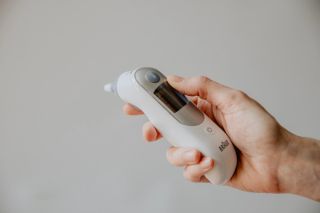Contact tracing is a linchpin of the reopening strategy at Temple University, says Dr. Resa M. Jones, chair of Temple’s Department of Epidemiology and Biostatistics.
“You need to identify those positive cases and then contact the people who have come in contact with them as soon as possible,” says Jones who has designed a free online contact tracing training course at the institution.
Temple is not alone in employing this strategy. As campuses reopen this fall, many will do so with their campus contact tracing teams ready to go. Administrators hope that when paired with frequent testing, social distancing, mask-wearing, smaller classes, and other infection-prevention strategies, any outbreaks of the coronavirus that might occur on college campuses this fall will be contained.
Three Levels of Contact Tracing
At Temple, which has more than 39,000 students, contact tracing will be conducted by Student Services and Employee Health Services. Each positive case will involve three components of contact tracing, Jones says. The first step is contacting the person who tested positive and learning who they came in contact with and where they went recently, as well as explaining to them the importance of staying in quarantine. The next step is contacting the people who came in contact with the positive case and asking them to self-quarantine as well. The final component is making followup calls to those who are quarantining to see if they need social services and other support to continue quarantining safely.
It’s a time-consuming process. Jones notes Pennsylvania’s Department of Health estimates that for every [positive] case, there's an average of 10 contacts. She says phone calls with each contact take about 30 minutes, so on average “that's five hours of calls,” that need to be made per positive case.
Jones says her university plans on having staff members perform the bulk of their contact tracing, but they have plans to ramp up with student contact tracers if necessary.
- How to Stay Connected to Students During Covid
- How Higher Ed is Handling Cybersecurity During COVID-19
Technology and Humanity Needed
At Mississippi State University, Vice President for Finance and Administration Don Zant says the plan is to have the institution’s health staff conduct contact tracing on campus. “We're working with the local health authorities, but coordinating it helps us keep our hands on the information, so we can better communicate it,” Zant says.
Administrators at MSU believe that contact tracing will limit the number of coronavirus tests the institution needs to administer. The hope is to get as many tests as possible, Zant says, but that number won’t be unlimited, so they will test those who are symptomatic. “If they've been in close contact we might tell them to isolate for two weeks,” he says, without administering a test.
University officials are working with the Everbridge app developer to design a program that will assist with contact tracing on campus, and provide alerts and reminders to students and staff to check their temperatures.
While technology will be a key component of many successful contact-tracing programs, forming a human connection is also key.
Elizabeth Scott, a 23-year-old senior health professions major at Temple, took her university’s contact tracing training course because she needs clinical experience for her major but traditional patient care wasn’t available this past summer due to COVID-19.
Scott says one of the most surprising things about the training is how important creating a human bond is to the process. “You have to make an interpersonal connection with the person that you’re talking with because they really have to trust you,” she says. “You don’t want them to feel attacked. You want them to feel like they’re getting good information on how to say healthy.”
Coordination with Local Health Officials
Administrators looking to train contact tracers for their campuses can take advantage of online contact training resources. The University of Houston launched an online contact tracing course on Coursera. At Temple, the contact tracing training course is free and open to anyone, and there are currently nearly 600 enrolled. Those associated with other universities have taken the course, as have those who want to learn how to contact trace so they can work with their local health departments.
While most of the class can be completed asynchronously, those enrolled must complete a mock call that simulates a real-life contact tracing call in order to pass.
Jones, who designed the Temple University course, has been contacted by representatives from higher ed institutions looking to create their own contact tracing teams. She says it’s important for officials to make sure they are working lockstep with their local health department and not duplicating efforts. For example, Temple has a working relationship with the city of Philadelphia, Jones says.
Of course, Jones says contact tracing on campus and in the larger community only works well when outbreaks have not spiraled out of control. “If there's widespread community spread then it's difficult to do contact tracing,” she says. “Our goal really was not to focus necessarily on Temple, but focusing on what's important for public health and those containment strategies for public health.”

